Inscribed on the Western College Legacy Circle
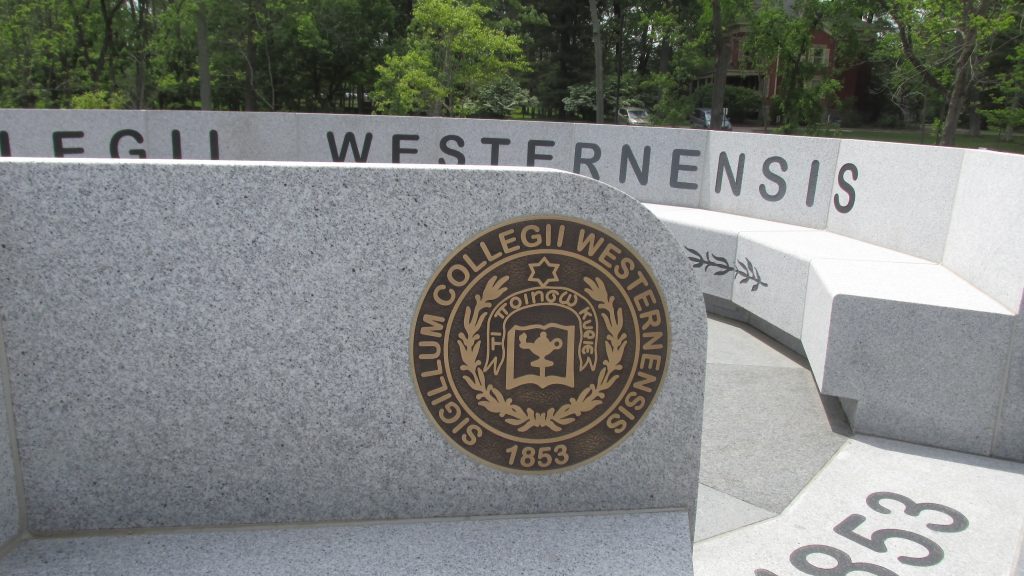
The Early Years of an Independent Female Seminary
1853 – Oxford citizens, led by the Rev. Daniel Tenney, pastor of the Second Presbyterian Church, and Mary Adams Parker Tenney, charter the Western Female Seminary.
1855-Helen Peabody, the first Principal, and five teachers come from Mt. Holyoke Female Seminary, South Hadley, Mass. Proteges of Mary Lyon, they bring “The Holyoke Plan” with its strong emphasis on academics. The Plan becomes the Seminary’s foundation.
The first class of 150 students, some as young as 14, arrives from 10 states for a three-year course emphasizing English, Latin, religion, sciences, and math, plus music, art, French, Greek, and calisthenics. Establishing a tradition, Miss Peabody welcomes each student on the Seminary’s front steps.
To keep tuition low, all students perform domestic work. Students and teachers live as a community on campus.
1865 – Seniors give up traditional blue-sashed white graduation gowns for brown gingham and use the savings to buy gifts for sick and wounded Civil War soldiers.
1880 – Graduates form an Alumnae Association. Auretta Hoyt, class of 1858, is its first president.
1887 – Olivia Meily Brice, class of 1866 and former Alumnae Association president, is the first woman on the Seminary’s board of trustees.
Western Motto: Lord, what woulds’t Thou have me do?
Western Female Seminary Becomes a Pioneering Liberal Arts College …
1888 – Seminary graduate Leila S. McKee, class of 1877, is appointed the second principal. She and the trustees begin the arduous steps required to become a college.
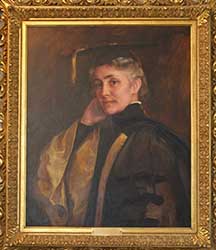
1894 – The Seminary is now The Western, A College and Seminary for Women. Miss McKee is one of the youngest college presidents in the country and the first woman to join the Association of Ohio College Presidents.
1895 – Mary Alma Sawyer, instructor in chemistry and physics, is appointed to the new position of dean. As one of the first deans of an American college, she becomes a definer of that role. The College awards its first Bachelor of Arts degrees.
1904 – The Ohio Legislature ratifies the College’s name change to The Western College for Women.
1905 – The College celebrates its Golden Jubilee and honors “the Western girl as missionary, homemaker and professional woman.”
1910 – Western awards composer Edgar Stillman-Kelley the first resident fellowship for creative work from an American college.
1920s – Local African-American stonemason Cephas A. Burns and his team design and build the many stone bridges with lampposts that become iconic landmarks on the Western campus.
Go where no one else will go, do what no one else will do. Mary Lyon
… with a Progressive but Practical Curriculum/Program
1894-1904 – Western adds a department of physical training and becomes the first American college to offer academic credit for domestic science.
1912-1916 – New concepts of majors and minors, semester hours, and a letter grading system are implemented. Economics and sociology departments are created. The psychology and education departments combine to support a new teacher training program. Passing a swimming test becomes a graduation requirement. The Honor Society is formed.
1917-1918 – Students plant “war gardens” during WWI.
1924 – Western is one of the first American colleges to offer training in modern dance.
1932-1938 – The College confers its first Latin Honors on graduates and requires seniors to pass comprehensive exams in their majors. Credits in music count toward the BA degree.
1942-1945 – During WWII, students plant “victory gardens.” Instruction in Morse code and in film is provided. The English department introduces puppetry. A theatre department and major are established.
1959 – The first group of seniors is invited to read for honors in their respective majors.
Our Star of the West, brighter far than the rest . . .
Alma Mater (1912). Words: Florence L. Smith. Music: Edgar Stillman-Kelley.
… and College Governance, Rituals, Traditions, and Values
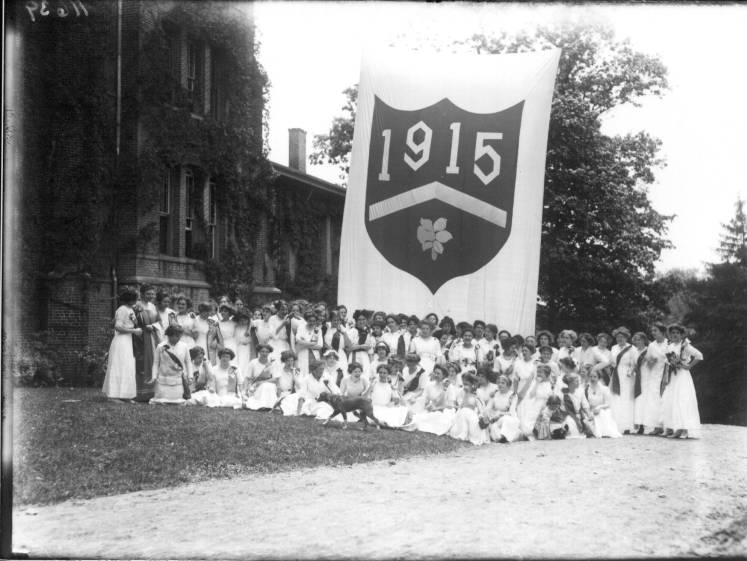
1890s – Tree Day and Flag Day traditions begin. Each new class plants a tree with a shovel decorated with class colors. A class flag is secretly designed and flown at an all-college gathering.
1893 – The first issue of Western-Oxford, a quarterly for alumnae and later a student literary publication, begins.
1904-1905 – The upper classes celebrate the first-year students on College Day. Seniors first wear caps and gowns on Senior Day.
1907 – Western’s Honor System, with its ideals of individual honor and responsibility instilled by Helen Peabody, is given more structure by creation of The Student Government League.
1910-1916 – The Multifaria yearbook and the Alumnae Quarterly Bulletin are introduced.
1926 – The Western College Government Association is chartered, with a Judicial Board and Parliament. Students, administrators, and faculty are equal participants, but only students can hold office.
1929 – Junior Garb, a dress or suit in class colors, is first worn by members of that class.
1931-1941 – Western’s weekly student newspaper, Round-Up, and Scope, a student literary publication featuring fiction, essays and poetry, begin.
1945 – Western is the first women’s college to broadcast daily over a commercial station, Hamilton’s WMOH.
The Western Way: masters of the situation anywhere. Helen Peabody
Western Articulates a Global Vision with an Intercultural Emphasis …
From its early years, Western fosters an interest in other countries and cultures. Graduates serve as missionaries in Asia, the Middle East, and then-Dakota Territory. The first “foreign student,” daughter of Native American and French parents, arrives from the Dakotas in the 1850s. Missionary graduates send students.
1902 – The first internation student arrives from Japan.
1920s and 1930s – Student assistants from France and Chile join the Romance Language department. Other students come from China, India, Germany, Uganda, and the Philippines.
1942 – A new curriculum entitled “A Liberal Arts College in World Crisis” forms the basis for a post-war study program, including a major in “World Cultures.”
1945 – After the war, 15-20 international students enroll each year. A foreign student advisor is appointed.
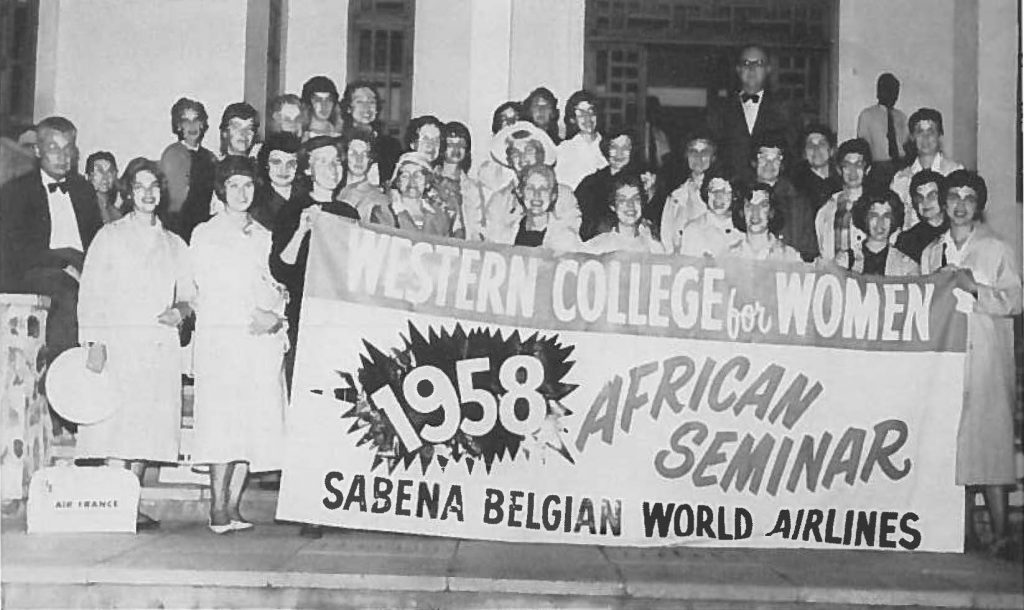
1952-1974 – Western’s trustees announce a program of international education and charge Herrick B. Young, the new president, with implementation. Western becomes a “liberal arts college with an intercultural emphasis.” A four-year study and extra-curricular cycle focuses in turn on Africa, Latin America, the Middle East, and East Asia. The Department of Intercultural Studies is created in 1956. Western students, faculty and alumnae travel each summer to that year’s focus area. Junior year abroad venues increase and include Asia. By 1966, 10% of students are from abroad.
East and West in friendship meeting find in thee a guiding star.
Alma Mater (1961). Words: Narka Nelson. Music: Richard Monaco.
… and Demonstrates a Commitment to Freedom, Justice and Inclusion for All
1911-1912 – Students organize two campus groups in support of women’s suffrage.
1950s-1960s – Required Sunday and weekday chapel services, always non-denominational, increasingly reflect the diversity of the student body.
1955 – The College welcomes its first African-American student.
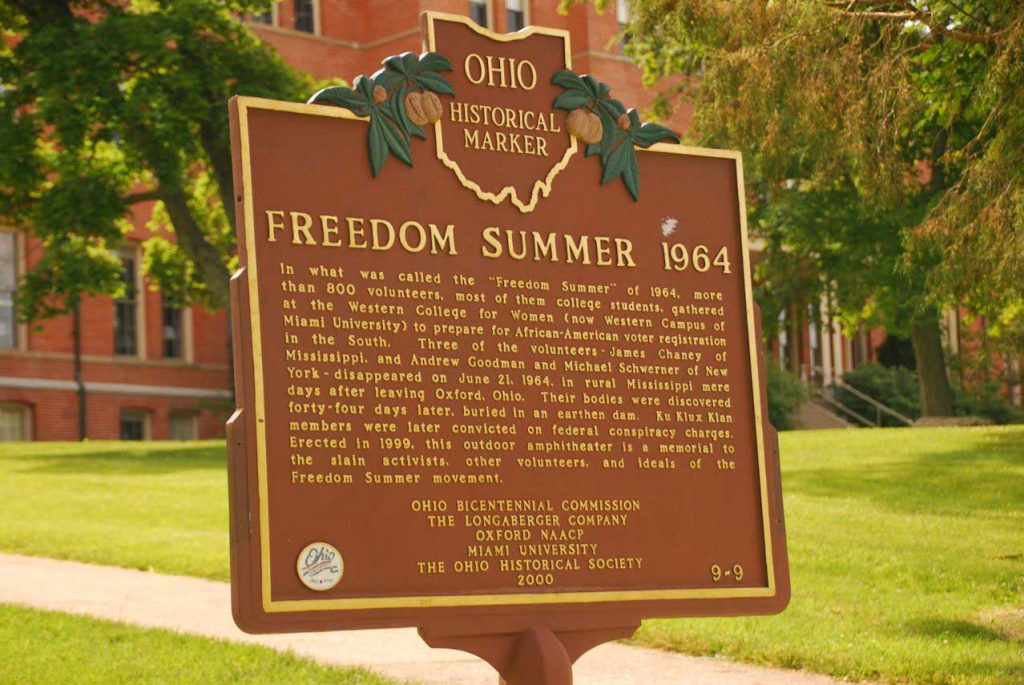
1964 – Western College hosts the Mississippi Summer Project’s orientation and training program for young volunteers heading south to register African-American voters and set up Freedom Schools.
1971 – Western begins a new academic program, “Freedom with Responsibility,” comprised of interdisciplinary learning units and individualized programs of study. Written evaluations replace letter grades. The first male students enter.
1974 – Financial pressures result in the closing of the College. Miami University acquires the Western campus. The Western College Alumnae Association, Inc. is established.
And when the dawn breaks bright and clear, to our Alma Mater we will ere be near with our hearts so true and our friendships born of you. “Western Blue.” Words: Western College Class of 1951. Music: Robert Rowe.